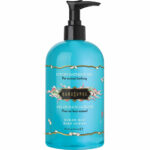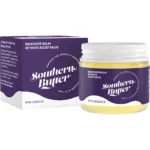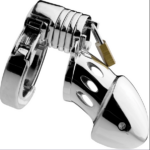Sugarcunt’s Dom Lessons
Last year, I shared a VERY long Twitter thread full of advice that made me a better dominant in BDSM, and I’ve been asked to put it on my site, so here you go!
I spent the first part of the last decade thinking I wasn’t much of a dom, then thinking I was a service top and doing online prodomming, then realizing I’m a switchy, dominant badass, with the right submissive and personal connection. I’ve offered a long list of things that helped me be a better dom, because we could all benefit from dom lessons, right?
This 36-item list ranges in skill level and is pretty exhaustive – feel free to take breaks, use highlighter apps on items you want to come back to, or do whatever you need to engage with content of this length at your speed. I’ve broken them down into 3 sections for better relative navigational ease, but in no particular order.
Shortcut links:
First Section
- Subbing helped make me a better dom.
If you submit, you’re walking in shoes you’ll ask another to fill when you dom.
What turns you on in submission will likely work on some people who want to sub for you in that dynamic.
- Learning active listening.
Empathy is crucial to my process as a dominant – I respond primarily to a sub’s feedback.
Active listening can help you get in a sub’s head & in turn their deepest desires.
It’s easy to probe to the heart of a kink if you know how to ask questions
- Learning to better tailor communication to dirty talk en scene.
Too many new dominants may shy away from checking in as often as they need or improving their techniques because they don’t see how to use dirty talk to keep the initial check-in en scene.
Whether it’s telling your sub to kiss the paddle if they want more, or saying, “Do you remember your safeword babygirl?” if you also need a refresher of a partner’s safeword when your scene starts out,
just think about how you can work the concern in with the moment.
-
Always questioning:
As someone with the deepest fondness for mental kink, and working in humiliatrix and prodomme capacities online, my domination techniques involve a lot of questions inside and outside the scene/bedroom.
I often send new-ish subby FWBs surveys.
Getting an understanding of my sub’s experiences, expectations, and limits means I basically have a schematic of their desire.
That’s how I think of every delve for personal info from a sub – I’m getting their schematics so I can consensually manipulate them for mutual pleasure.
-
Learning and using the safety techniques every time and teaching them to partners who don’t know.
I have absolutely stopped making out during a sex date to teach a person how to safely compress my carotid instead of crushing my windpipe.
Subs need to know this too!
-
Engaging in kink-critical discussion as part of my sex positivity.
Kink-critical doesn’t mean somebody hates kink, although I’ve been informed that trans-exclusionary radicals spent a lot of time sowing that impression among the public the last year or two and have embraced the term.
Kink just doesn’t exist in a vacuum.
It’s important for a dom to familiarize ourselves with the cultural connotations and consequences of our kinks, even if it’s a kink we LOVE!
Some kinks are problematic.If we have problematic kinks, a critical discussion is probably the first place it’ll come to our attention if we don’t already know.
Some kinks even hurt us in ways we don’t realize at the time (example: me, a brutal emotional masochist 14yrs ago, using it to hurt myself.)
-
Ignoring anyone preaching the “one twu way” of BDSM.
Embracing all the different ways people embody D/s roles and fulfill their kink needs is fascinating! Kink is a relationship, it’s going to look as unique as your relationship with your partner.
No one should shame your style if you aren’t nonconsensually harming people.
Be a dominant pet.
Be a submissive CG.Paddle a dom.
Wear head to toe denim.Only furnish your home with human furniture. Do you.
-
 Discarding cissexist, gender essentialist norms in my relationships. Nobody forced to posture for the sake of something like toxic masculinity is truly going to feel authentic in kink if their desires contradict stereotypes about masculinity & they can’t safely explore them.
Discarding cissexist, gender essentialist norms in my relationships. Nobody forced to posture for the sake of something like toxic masculinity is truly going to feel authentic in kink if their desires contradict stereotypes about masculinity & they can’t safely explore them.
Feminization kinks can be a safe place for people held to the expectations of masculinity to work out their interests without fear of judgement, or to lean into that fear and face it. Be the support your partner needs to experiment! -
Recognizing kink can be therapeutic, but is NOT a replacement for therapy/psychiatry/etc. means I have a flexible tool to help my subs change their lives, take care of themselves, and meet their goals.
-
Not wasting dominant energy on people who won’t connect on the level I need to wanna dom.
If you don’t pay to play, and we’re not flirty kinky friends or anything, you have to give me a reason to be interested in investing in you as a sub. Dominating you needs to seem interesting to me.
I don’t mind spanking or lending out my vag to pop fister cherries at parties, sometimes, but many dominants of more IRL dungeon experience discuss how often they’ll find their time consumed by requests from strangers, or worse, rudeness because they declined them.
What I DO practice is just severing connections with people who only want to sub for me but won’t give me any interpersonal connection or money in exchange.
I’ve lost so much time to subby cis dudes who wouldn’t talk about anything but their dicks and fantasies.
No more, dickbritches!
-
Embracing my many sides.
Just like nobody can tell me how a dom should “be dominant”. Nobody can say that non-CG doms should always be serious or sadistic. Kink is a way of expressing myself, and also a way to role-play and explore my potential.
I go with the flow, how I feel.
-
Regularly re-evaluating my limits, and asking my friends who loved those things what they liked about some of them.
Very specifically, this is how I went from having ABDL hard-limited (bc of past trauma) to having several DL loved ones in my life.
Section 2
- Learning your subs: No wrong way to do it, be it asking your new dungeon partner what their triggers and limits are, or if they have physical signs of yellow-light distress if they are (or go) nonverbal. Ask about subspace and aftercare. Ask what names they love and hate. The better you know your bottom, the easier they are to make shudder with the shortest possible sentence or gesture, and who can resist that kind of power?
- Being trauma-informed, and what’s more, informed about my own trauma. Sometimes we don’t consider the dom may be triggered by part of the play, too, but if you’re driving the scene, you absolutely need to be able to tell when you’re in triggering territory.
- Checking in with my subs. The meta conversation of how your D/s relationship is going should not be ignored. Trust is essential in a lot of play I love. Talks don’t always have to be a huge overview of your relationship; even just asking their thoughts on yesterday’s scene.
- When I find a sub who likes homework, I give them homework we can BOTH benefit from. In service, this can be doing a task for me for their homework, but in general, I also love the effectiveness of getting subs to keep sub journals, or write about their experiences or fantasies.
- I don’t let distance or reality limit all my exploration. Role-playing is incredibly useful and incredibly hot. It can be easily done via text or a phone. I love being able to share my fantasy kinks with partners instead of being limited to smutty art or erotica.
- I yoinked the improv guideline of, “Yes, and?” (in attitude, if not actual conversation). Rigid, planned, controlled scenes have their place in the world, but so much of kink can be so exploratory and fulfilling if you adapt to what your partner provides! It’s like a duet (or jam band, girl/boy/enby group, choral ensemble, etc., if you’re not doing 1-on-1 kink!)
Even if you’re the dom, there’s more than just you in the scene, so let your submissive(s) co-author it with you. As with D&D parties, trying to railroad your partner… isn’t gonna work for everyone. Even if it DOES work for your partner, don’t underestimate the bonding you can do collaborating. - I’m intentional with my words. This is an essential part of using someone’s “blueprint” to make them blush, or stammer, or cum at the right moment. I am also intentional with my tone and articulation when using my voice to dom. Many doms have The Voice. You know the one. You can practice using The Voice to become more adept with it.
- Having negative experiences as a sub and dom over time. Experience teaches you so much, but bad experiences help me learn the most, even one that aren’t personal. I’m not saying self-destruct, just try to look at what you can carry forward after an incident.
- Body service.
 I know some people may find it strange, but I just personally gain a lot of connection from washing a partner on either side of the slash in the shower. It’s a time to really revere and give care to their body. It gives ways to support the wellbeing of partners and myself. Very intimate.
I know some people may find it strange, but I just personally gain a lot of connection from washing a partner on either side of the slash in the shower. It’s a time to really revere and give care to their body. It gives ways to support the wellbeing of partners and myself. Very intimate.
Plus, bathing together, for example, is a great way to get cleaned up before anal play while still engaging! It’s OK if it’s not for everyone, but listen, I’m all about making my life easier and my scenes more comprehensive. - Use the pain scale. This is a pretty basic impact practice. Establishing a pain scale for EACH partner is important. One partner may like impact at a 15 on their 1-10 scale, but another is so sensitive that their 5 is too much and 15 is like death.
Here’s how to use the 1-10 pain scale in a scene: Spank them once in your intended target area. Ask what # it would be, 1-10. Second hit, harder, 1-10. The goal is familiarizing yourself with the swing you need for what they want. Ask the # they want most of the pain to be.
You can communicate throughout an impact scene in this way, using numbers to guide how hard and where you hit. You can use this outside of impact too! If you’re intimidated by wax play, a brief 1-10 test with your candles will help you AND your top (Also helpful: having the right candles.)  On the note of wax play: The candles you use ARE important. Any candle that burns too hot, especially beeswax candles, can unintentionally hurt the sub. Soy candles, unscented, are most ideal for responsible beginner wax play. Any candle with a scent will burn hotter. If you’re not familiar with topping wax play, also bear in mind: the further the wax falls, the cooler it will be when it hits the skin.
On the note of wax play: The candles you use ARE important. Any candle that burns too hot, especially beeswax candles, can unintentionally hurt the sub. Soy candles, unscented, are most ideal for responsible beginner wax play. Any candle with a scent will burn hotter. If you’re not familiar with topping wax play, also bear in mind: the further the wax falls, the cooler it will be when it hits the skin.- If you love chastity and are as homebound as me, you may have struggled with the idea of “locking” a distance sub’s chastity device when they have the keys (aside from the emergency key). Conveniently for us, they make disposable, numbered, plastic small locks.

Lock check your sub as often as you want – they have to send you a photo of the lock. If the number is different, someone has some explaining to do!
Section Three
- I’ve discussed my love of essays, homework, and surveys, but I specifically want to hone in on the topic of a sub journal now, especially for your new, lifestyle, or TPE submissives. This is such a customizable activity for your needs.
First, make sure you and your sub discuss a realistic schedule and what your expectations of journaling will be. Will they write daily? After scenes? Only when you assign something? How long is the writing expected to be?
Sub journal prompt ideas:
- What draws you to submission?
- What is your ideal dominant like?
- What are your limits? Make soft+hard limit lists.
- What kink most interests you and why?
- What is your most ambitious/taboo/creative/__ fantasy?
- What does it mean to you to submit?
- What is your ideal aftercare?
- Talk about a time your dom did not provide enough aftercare
- 500 words on what you like about [insert kink here]
- I’ve included other sub journaling prompts in printable, fillable, and accessible formats in my Educational Resource Library for my patrons.
Also consider making your sub research and journal about the oppressive histories of their kinks, making them journal for their self-care, and journaling for behavior modification tracking.
If text journaling isn’t your sub’s thing, other options include: oral reports, discussing together during focused intimate time, having them read out loud to you, art projects, intepretive dance, making music or playlists.
The point is that you and your sub explore and examine things together – building that in as the dominant means you’re creating structure for that exploration, instead of just kinking out when you’re together but never talking about things.
- Mid-scene switching with a regular partner who is also a switch.
If you only hold one role each scene, some people are going to be waiting a while before they get to try what they really want.
It’s easy in a switch couple to just default to the same roles when you’re in a rut.
There are lots of different ways to structure this, so as with all my advice (except safety), DIY the shit outta it. Some folks might benefit from planning their scene and the roles it’ll contain. My nesting partner and I improvise depending on how we feel. Sometimes this looks like a sudden and unnannounced shift in dialogue, sometimes it’s narrating the start of the scene you’re intitiating, sometimes it’s direct “out of character” communication.
This is because we fuck often, and almost always spontaneously. If we have a very specific planned scene it would be more the norm to talk about it beforehand. Otherwise, we cycle through dynamics at a whim, shifting the sceptre between the two of us. But the result of changing roles so quickly and often is that I get more practice, and practice DOES help, with all things. - I learned to divorce sensations and experience I provide from common expectations.
Some new kinksters forget everything can have nuance.
A sadist might be amused by hitting someone hard, but some of us don’t want that most of the time!
This is perfect general advice, but also, specifically, a great impact hack a kind blogger friend taught me firsthand, and it was blissful. I like impact but have chronic pain, I don’t love pain, I have a low pain threshold and fibromyalgia. I always prefer thud, not sting.
After establishing the pain scale with me, my friend gave me a beautiful, rhythmic, hypnotic rapid paddling, keeping her swings between 4-6 on my scale with the rare 7 for surprise ouch. It totally lulled and soothed me, and served as tangible evidence there absolutely was valid space in kink even for impact that isn’t particularly painful. It was a panacea for the soul and I love showing others, but trying to find doms who understand nuance like that can be challenging sometimes if you don’t communicate about it enough. By the end of that spanking, I was centered and deeply aroused. So, if you’re struggling to conceive how a non-painful spanking would be fun, just think that for some of us, it’s like foreplay. - Learn about how the brain works. You needn’t have a deep interest in psychology to find comprehensive books on the topic anymore. The hypno community may be one of the few I can think of off the top of my head that really obviously utilizes psychology a lot, and I’m still new to it.
Psychology topics I recommend:
Trauma & PTSD. This will inform play for a ton of people. My personal book recommendation is The Body Keeps the Score by Bessel van der Kolk. This book also talks a bit about the second topic I recommend understanding: Neuroplasticity and how learning happens on a neural level.
Handy quick-tip to differentiate: Negative reinforcement isn’t inherently “bad” in any way – it focuses on motivating the subject using the removal of stimuli. Negative reinforcement removes something, while positive reinforcement centers on adding something to reinforce the desired behavior. Negative reinforcement isn’t always painful or unethical.
On a neuropsychological level, all our behaviors and habits are just neural pathways between brain cells. They’re often referred to using the visualization of grooves on the brain, or roads. When a person meets a stimulus, their neurons fire, driving down the road from cell A to cell B.
With enough repetition of the same stimulus triggering the A to B neuronal firing, you get a deep “groove” in your brain, meaning the behavior becomes basically automatic, ex. muscle memory, habits, maladaptive coping skills. The deeper the groove, the more well-worn the road, the more quickly your brain tries to use the road.
Neuroplasticity refers to your brain’s ability to re-organize all that shit, and purportedly, children have more neuroplasticity than most adults, which is why kids learn, cope, and change rapidly.
The reason it’s really fucking hard to stop biting your nails or using harmful coping tactics is because your new habits must forge a new path and walk the new path a LOT before your brain routes traffic to the new path by default. You have to keep making the choice, persistently, to train your brain… but as an adult, your brain isn’t as spry as it used to be! It takes longer.
So let me explain why you should care, dear degenerates: if you want to train a partner, you need to understand how it all works. The stimulus in conditioning makes the neural pathways fire to generate the response.
If you’re trying to train your sub and want them to, say, get aroused when you whistle, the obvious answer is positive reinforcement. The training will take repetition so the neural pathways fire a lot and the response becomes habitual. So you whistle (which is adding the stimulus) every time your sub is permitted pleasure.
You’ll see colloquial stories all the time about people getting aroused by partners putting their hair in ponytails because it happens most often before the partner administers oral sex to them.
Understanding neural pathways and neuroplasticity also means you understand why you should never just quit or derail the habit you’re trying to build if you miss one day. You’re training some brain cells. It takes time, especially for adults. Giving up ensures it never happens.
This also means you, dear degenerates, can use low-key conditioning techniques on your sub just for little things for effect – not so much in a nonconsensual way, just more in the, “You can find a button and push it and also nurture the button and link it to other things.” - Learning what’s racist and why and all the terminology involved so you don’t use or perpetuate it. Just a very obvious example, do you know about the fetishistic racist history & aspects of cuckolding, still perpetuated today with shocking regularity?
- I swapped SSC for RACK (now PRICK exists too!)
“Save, sane, consensual” is such an ableist misnomer. Nothing in life is 100% safe, you can drown in a tub with very little water in it. My mentally-ill, edgeplay-loving self quickly adopted RACK: Risk-Aware Consensual Kink. Now there’s also PRICK: Personal Responsibility, Informed Consensual Kink. - I actively sought to learn from others. Whether you attend local demos or get a KinkAcademy subscription, you’ll always improve as a dominant by continuing to learn and hone your craft. Kink has an endless number of permutations – don’t you wanna try ’em all?
- Taking notes, literally.
I’m a nerd from stem to stern, I’m nonmonogamous, I have 5 partners, and I’m Disabled with a lot of holes in my memory from gaslighting. So I have a google spreadsheet I try to maintain with details about my partners & their kinks. I didn’t wanna forget or mix up anyone’s safe word or limits, or forget the diapers a partner wanted to try next, or forget what makes anybody squirm. I even put current pronouns on the sheet. Just because I don’t whip it out all the time doesn’t mean it’s not worth doing.
I’ve created a template spreadsheet for my patrons to save them some time on creating a list like this! - Feeling tired or uninspired? Force your sub to drive the scene with questions – all you have to do is ask. I know this is the third or fourth time I’ve brought up asking questions, I hope that stresses to you how important some type of communication is in a D/s bond.
Sometimes you’re tired. Maybe you aren’t feeling aggressive. Sometimes you can engage with your submissive’s kinks without actively tying up by: asking about fantasies, history, or hypothetical situations, or giving them tasks to perform for you. - In the meta of your relationship, establish and environment where you can be wrong sometimes. It’s hard to accept when we fuck up, especially if we’re supposed to be the boss. You’ll never be aware of that if you don’t sincerely listen to your sub and hold yourself accountable.
We can all make excuses for our behavior, but remember: intent doesn’t equal impact. Regardless of excuses, we have to be willing to admit fault when we screw up or hurt someone.
Create a safer environment for your sub to bring up transgressions or issues by:
– Being VERY clear that in the meta discussion of behavior, you are equal partners,
– Scheduling regular meta check-ins,
– Doing your best to check in on your sub’s well-being on top of that, based on behavior. - Evaluate yourself:
- What’s an honest look at your skills?
- What are you good at?
- What needs improvement?
- What do you WANT, enthusiastically, to improve next? (Sometimes it’s not what needs it)
- What does your sub think of your dynamic and behavior?
- What does your sub think you need to improve?
- What does your sub say you do well?
- What expectations does your sub have of you?
- What expectations do you have of them?
- Are these expectations fulfilling and realistic for you both?
- What is my weakest skill I use as a dom? What’s my strongest?
- Am I kinking in a way that’s positive or negative for my overall mental health?
- What about my sub’s mental health?
- Who are 5 kink educators I want to learn from in the next 5 months?
- Know how your mental health and kink interact.
Once you know, you’ll begin spotting common themes, for example, littles with BPD or other attachment disorders. With BPD, our trauma tends to damage the inner child, and mine is inextricably linked to my littleness. My mental health coping and caregiver (CG) domming improved when I realized it.
Littles need safety. Traumatized people with BPD need safety. Knowing the link made it easier for me to be a better Daddy.
If your little has trauma around their real life guardians, you probably wanna pay attention to that, so you don’t inadvertently trigger it, because my CG is one of my BPD favorite people (FPs) so I’m ultra-sensitive to rejection and abandonment from her. - Picking outfits for a sissy, little, doll, femme, bimbo, or anyone else you’d cover in make-up from head to toe? Send them this feminization questionnaire as a starting point.
















